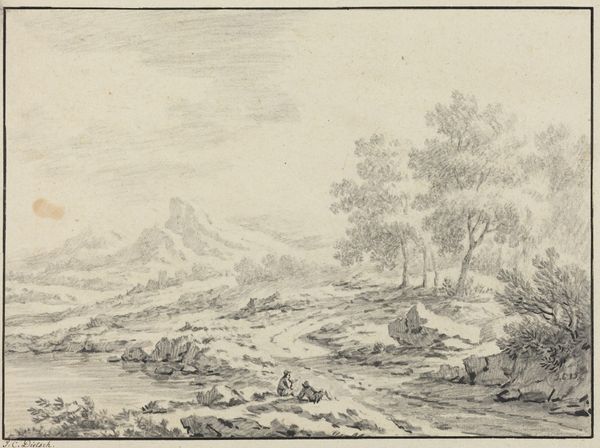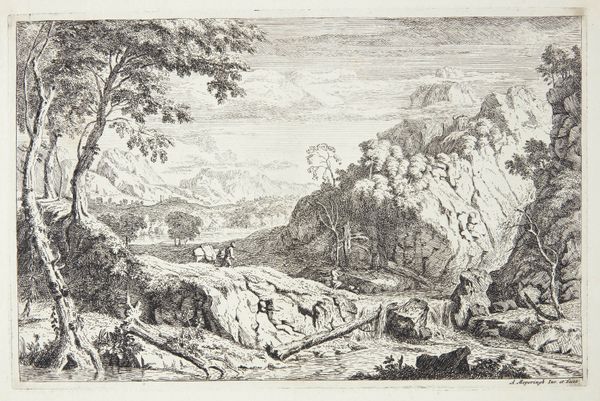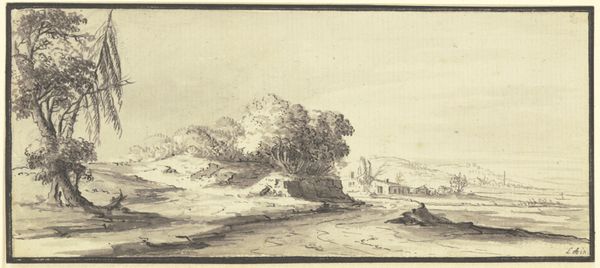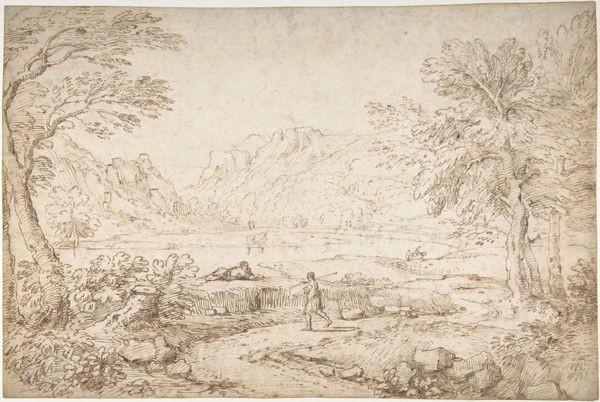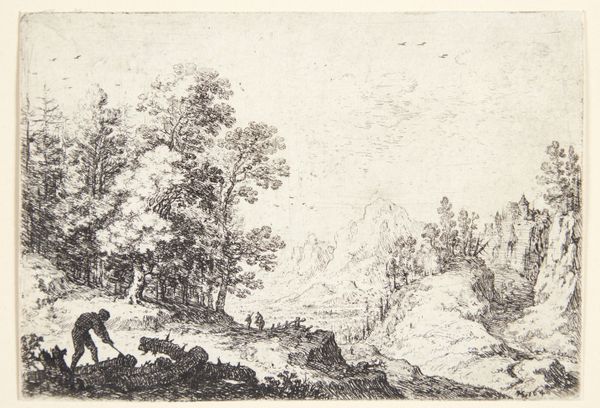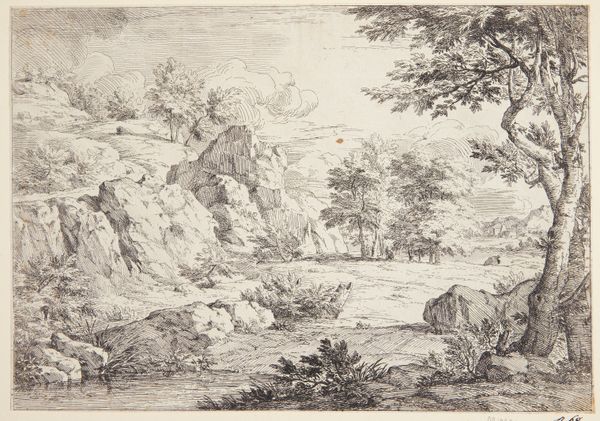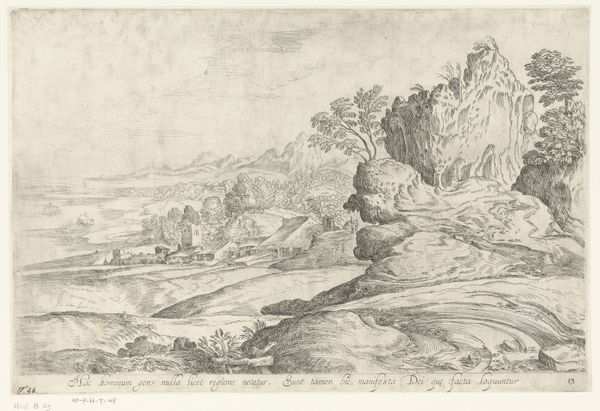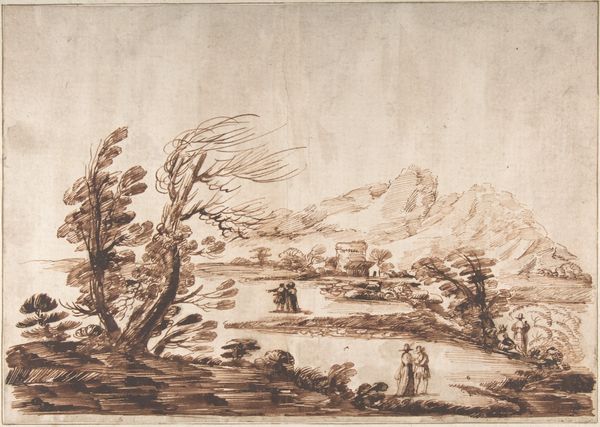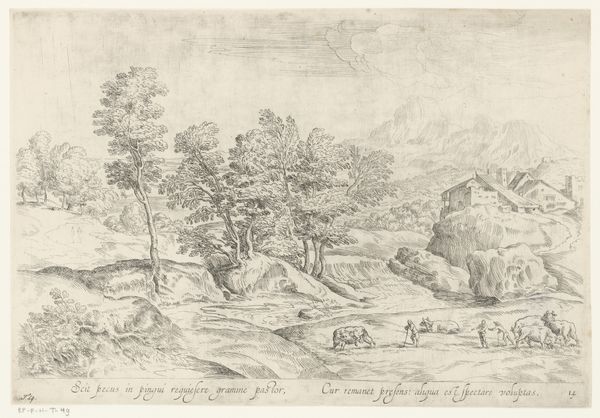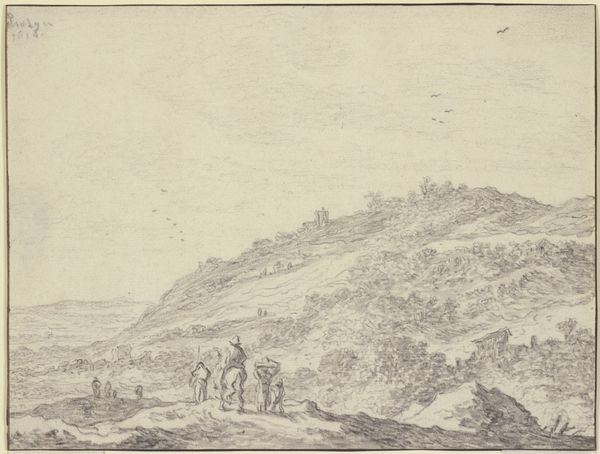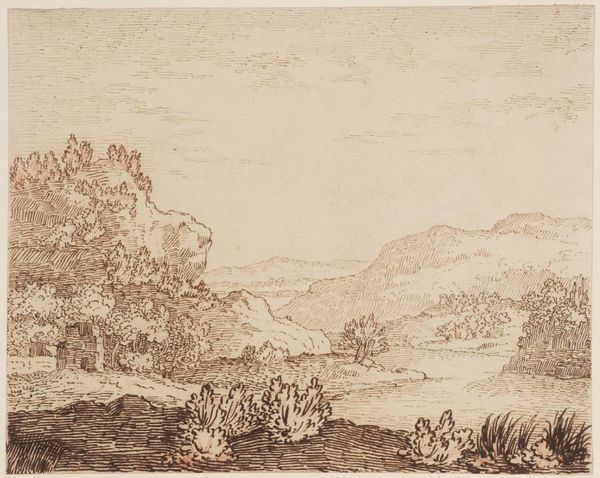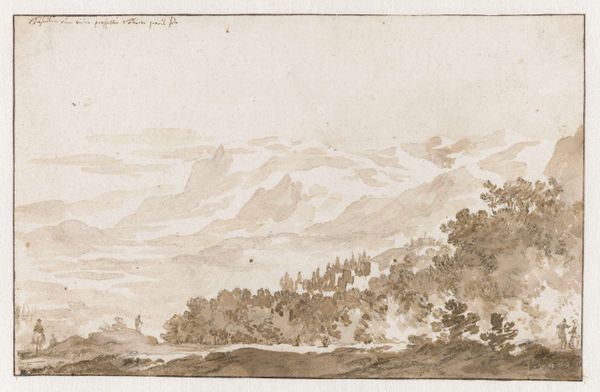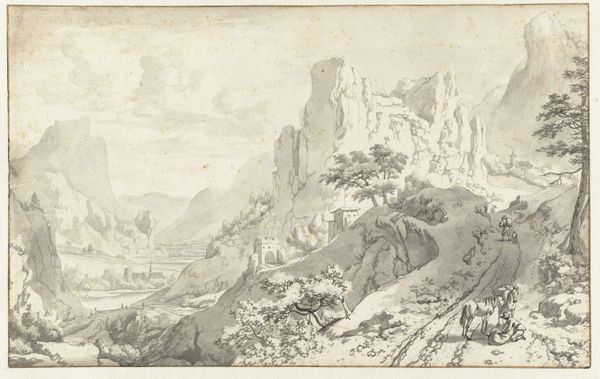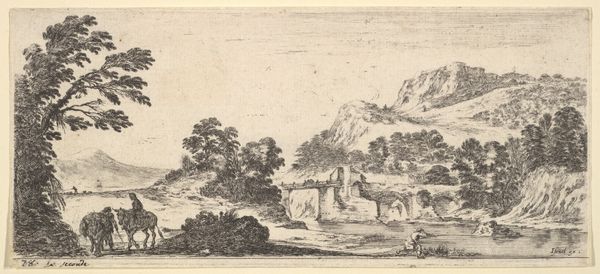
Rocky Landscape with Figures and Dog on Path n.d.
0:00
0:00
drawing, paper, pencil, chalk, graphite
#
drawing
#
landscape
#
figuration
#
paper
#
pencil
#
chalk
#
graphite
#
realism
Dimensions: 241 × 330 mm
Copyright: Public Domain
Curator: We're looking at a work called "Rocky Landscape with Figures and Dog on Path." It’s an intriguing drawing, medium specifications indicate that it utilizes graphite, chalk, and pencil on paper. Editor: My first thought? Bleak, but peaceful. The muted tones emphasize the grandeur of the landscape, but there's also something somber about the figures almost swallowed by the vastness. Curator: Exactly. The artist, Georg Friedrich Dietzsch, situates these tiny figures along the path in such a way that they emphasize the overwhelming scale of nature, reflecting a broader interest in landscape art, and more specifically in the picturesque movement that influenced representations of nature. Editor: Picturesque is interesting... I think it evokes some crucial questions about how we frame landscape in art. It’s always coded isn’t it? Whose gaze, whose experience is shaping the view? Look how those jagged rocks almost loom over the figures; is that commentary, or just visual framing? Curator: Both, perhaps? Consider the period it emerged from – growing urbanization contrasted with a nostalgic idealized countryside. The ruggedness, as you mention, offers a certain truth of nature but that family resting feels carefully positioned. Editor: Makes me think about environmental responsibility, doesn't it? About how the so-called picturesque can mask the labor and the land exploitation that it depends on, creating an experience of awe. We’re almost complicit, aren't we, in turning landscapes into aesthetic backdrops when maybe, the landscape should confront us. Curator: Dietzsch may not have overtly intended this critique, but examining it through this lens illuminates how even seemingly innocent landscape drawings are tied into socio-political currents and ideologies concerning land use. Art institutions have a part in this by carefully deciding which interpretations take precedence. Editor: And those narratives need interrogation! Revisiting pieces like this gives us an opportunity to tease out tensions about land, leisure, and access and who benefits, historically, and now from idealized landscapes. Curator: A perfect example of how historical understanding can offer crucial insight when we examine images of art and connect them to contemporary challenges. Editor: It certainly compels me to rethink simple notions of beauty, urging for an ongoing dialogue about how we represent, and ultimately value, the earth and our place within it.
Comments
No comments
Be the first to comment and join the conversation on the ultimate creative platform.
